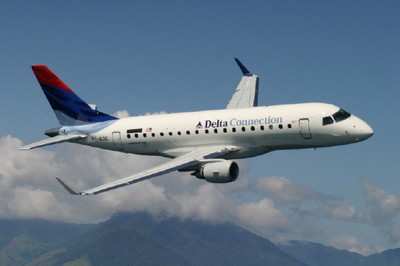Shuttle America ERJ-170 Departed Runway On Landing At CLE
 The
National Transportation Safety Board determined that the probable
cause of a February 2007 runway overrun incident involving an
Embraer ERJ-170, operated by Shuttle America, Inc., was the failure
of the flight crew to execute a missed approach when visual cues
for the runway were not distinct and identifiable.
The
National Transportation Safety Board determined that the probable
cause of a February 2007 runway overrun incident involving an
Embraer ERJ-170, operated by Shuttle America, Inc., was the failure
of the flight crew to execute a missed approach when visual cues
for the runway were not distinct and identifiable.
"Professional pilots have the daunting task of operating these
passenger aircraft on a daily basis under a variety of weather
conditions," said NTSB Chairman Mark V. Rosenker. "Their decision
making process and training must be comprehensive enough to take
all conditions into account."
As ANN reported, on February
18, 2007, Delta Connection flight 6448, an Embraer ERJ-170,
operated by Shuttle America, Inc., was landing on runway 28 at
Cleveland-Hopkins International Airport, Cleveland, OH during snow
conditions when it overran the end of the runway, contacted an
instrument landing system (ILS) antenna, and struck an airport
perimeter fence. The airplane's nose gear collapsed during the
overrun.
There were 71 passengers and four crewmembers on board. Three
passengers received minor injuries.
The Board found that contributing to the accident was the crew's
decision to descend to the ILS decision height instead of the
localizer (glideslope out) minimum descent altitude. Because the
flight crewmembers were advised that the glideslope was
unusable, the NTSB states they should not have
executed the approach to ILS minimums; instead, they should have
set up, briefed, and accomplished the approach to localizer
(glideslope out) minimums.
Also contributing to the accident was the first officer's long
landing on a short contaminated runway and the crew's failure to
use reverse thrust and braking to their maximum effectiveness. When
the first officer lost sight of the runway just before landing, he
should have abandoned the landing attempt and immediately executed
a missed approach.
Furthermore, the report states had the flight crew used the
reverse thrust and braking to their maximum effectiveness the
airplane would likely have stopped before the end of the runway.
The Board concluded that specific training for pilots in applying
maximum braking and maximum reverse thrust on contaminated runways
until a safe stop is ensured would reinforce the skills needed to
successfully accomplish such landings.
In its final report on its investigation, the Safety Board noted
that the captain's fatigue, which affected his ability to
effectively plan for and monitor the approach and landing,
contributed to the accident. By not advising Shuttle America of
this fatigue or removing himself from duty, the captain placed
himself, his crew, and his passengers in a dangerous situation that
could have been avoided, the Board said.

Another contributing factor to the accident was Shuttle
America's failure to administer an attendance policy that permitted
flight crewmembers to call in as fatigued without fear of
reprisals. The policy had limited effectiveness because the
specific details of the policy were not documented in writing and
were not clearly communicated to pilots, especially the
administrative implications or consequences of calling in as
fatigued.
As a result of the investigation of this accident, the Safety
Board made recommendations to the Federal Aviation Administration
in the following areas: flight training for rejected landings in
deteriorating weather conditions and for maximum performance
landings on contaminated runways, standard operating procedures for
the go-around callout, and pilot fatigue policies.
 ANN's Daily Aero-Linx (04.16.24)
ANN's Daily Aero-Linx (04.16.24) Aero-News: Quote of the Day (04.16.24)
Aero-News: Quote of the Day (04.16.24) Airborne 04.10.24: SnF24!, A50 Heritage Reveal, HeliCycle!, Montaer MC-01
Airborne 04.10.24: SnF24!, A50 Heritage Reveal, HeliCycle!, Montaer MC-01 Airborne 04.12.24: SnF24!, G100UL Is Here, Holy Micro, Plane Tags
Airborne 04.12.24: SnF24!, G100UL Is Here, Holy Micro, Plane Tags Airborne-Flight Training 04.17.24: Feds Need Controllers, Spirit Delay, Redbird
Airborne-Flight Training 04.17.24: Feds Need Controllers, Spirit Delay, Redbird




